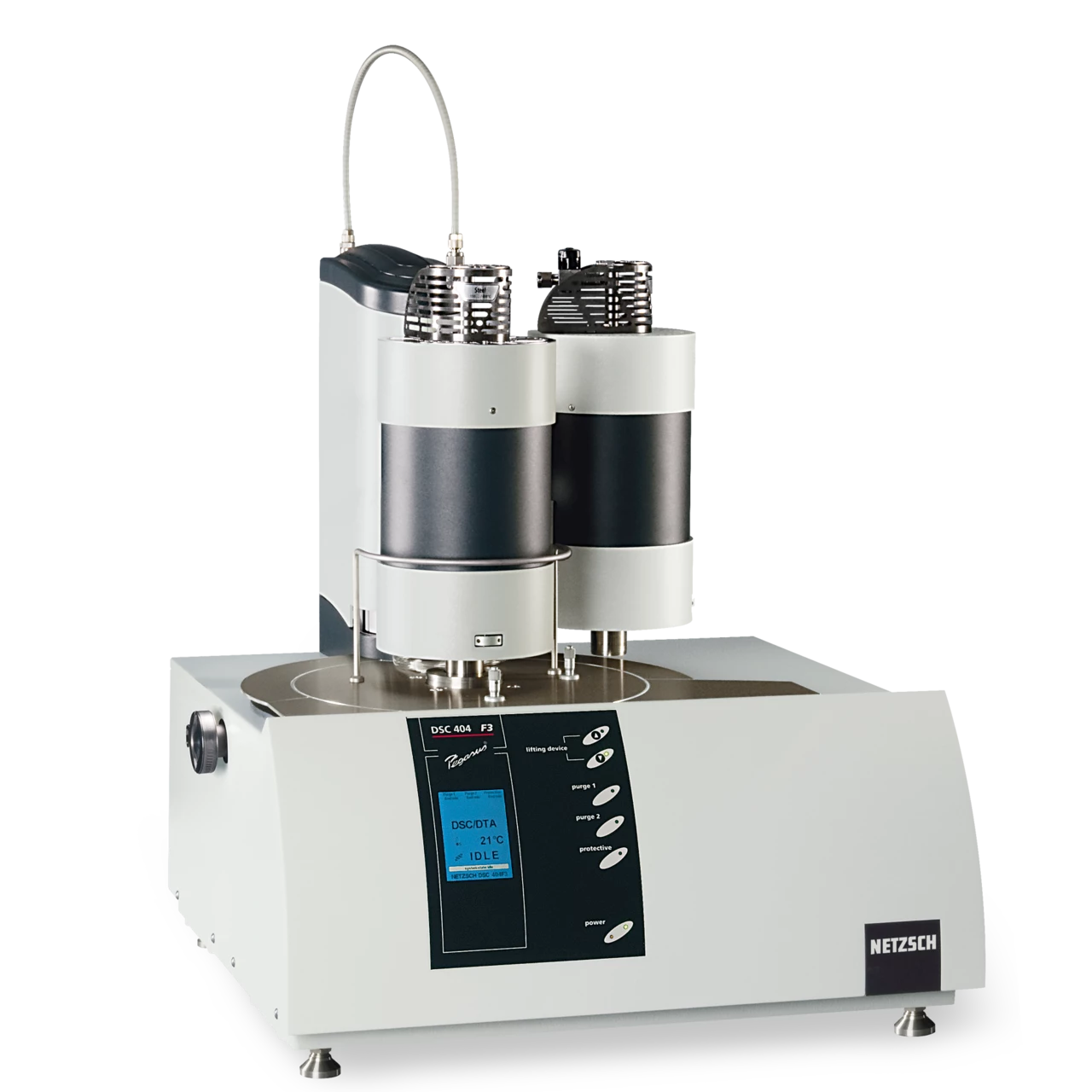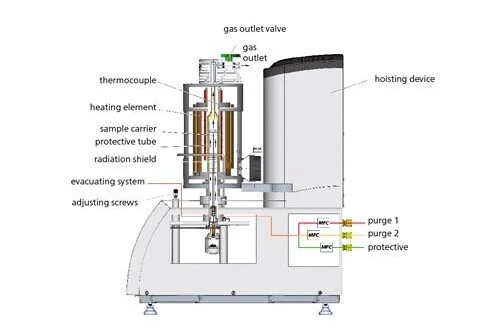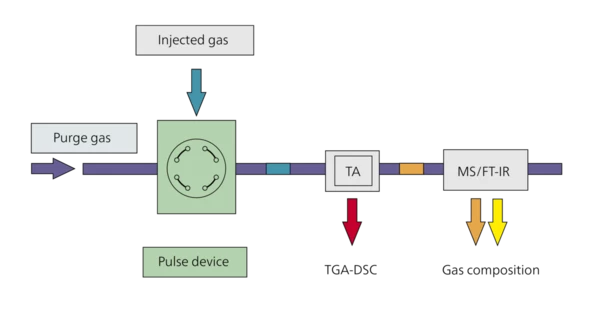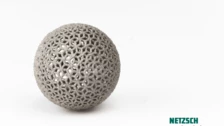Highlights
Fascinating Flexibility in Thermal Analysis
The DSC 404 F3 Pegasus®, High-Temperature Differential Scanning Calorimeter, is part of the economical NETZSCH F3 -product line, which is specially tailored to the requirements of comparative material characterization and quality control.
The DSC 404 F3 Pegasus®, High-Temperature Differential Scanning Calorimeter, can be operated from -150°C to 2000°C with various DTA and DSC sensors that are easily exchangeable by the user and various furnace types (please see accessories).
The sample chamber can be purged with inert or oxidizing gases in order to remove gases evolved from the sample.
The measuring system is vacuum tight (10-4 mbar).
Method
The DSC 404 F1 as well as the F3 Pegasus® systems operate according to the heat flux principle. With this method, a sample and a reference are subjected to a controlled temperature program (heating, cooling or IsothermalTests at controlled and constant temperature are called isothermal.isothermal). The actual measured properties are the temperature of the sample and the temperature difference between sample and reference. From the raw data signals, the heat flow difference between sample and reference can be determined.

More on the Functional Principle of a Heat-Flux DSC
A DSC measuring cell consists of a furnace and an integrated heat-flux sensor with designated positions for the sample and reference pans.
The sensor areas are connected to thermocouples or may even be part of the thermocouple. This allows for recording both the temperature difference between the sample and reference side (DSC signal) and the absolute temperature of the sample or reference side.
Due to the heat capacity (cp) of the sample, the reference side (usually an empty pan) generally heats faster than the sample side during heating of the DSC measuring cell; i.e., the reference temperature (TR, green) increases a bit faster than the sample temperature (TP, red). The two curves exhibit parallel behavior during heating at a constant heating rate – until a sample reaction occurs. In the case shown here, the sample starts to melt at t1. The temperature of the sample does not change during melting; the temperature of the reference side, however, remains unaffected and continues exhibiting a linear increase. When melting is completed, the sample temperature also begins to increase again and, beginning with the point in time t2, again exhibits a linear increase.
The differential signal (ΔT) of the two temperature curves is presented in the lower part of the image. In the middle section of the curve, calculation of the differences generates a peak (blue) representing the EndothermicA sample transition or a reaction is endothermic if heat is needed for the conversion.endothermic melting process. Depending on whether the reference temperature was subtracted from the sample temperature or vice versa during this calculation, the generated peak may point upward or downward in the graphs. The peak area is correlated with the heat content of the transition (enthalpy in J/g).
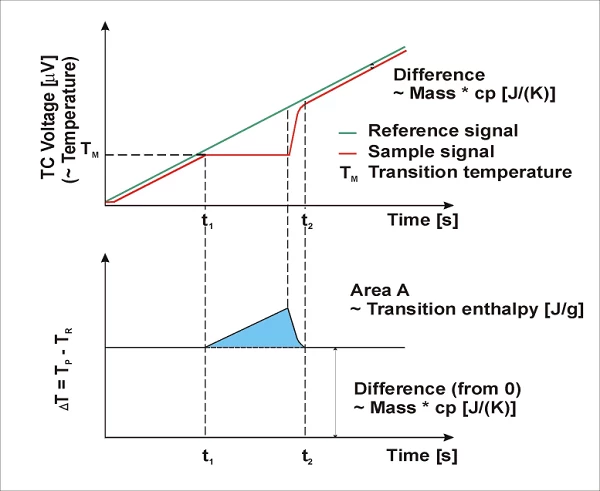
Specifications
Technical Data
Temperature range
Heating rates
0.001 K/min to 50 K/min
Measuring sensors
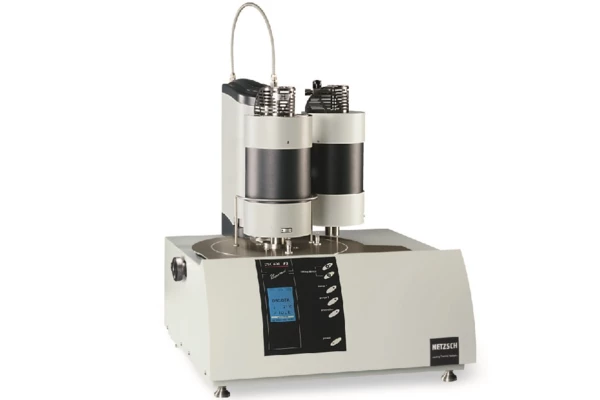
Thermocouple types:
S, E, K, B, W/Re, SProtected, P
Atmospheres:
inert, oxidizing, static, dynamic
Extension with unique OTS®® system
(option)
Software
Proteus®: Excellent Thermal Analysis Software
The DSC 404 F3 Pegasus® runs under Proteus®Software on Windows®. The Proteus® Software includes everything you need to carry out a measurement and evaluate the resulting data. Through the combination of easy-to-understand menus and automated routines, a tool has been created that is extremely user-friendly and, at the same time, allows sophisticated analysis.The Proteus® software is licensed with the instrument and can of course be installed on other computer systems.
DSC features:
- Determination of onset, peak, inflection and end temperatures
- Automatic peak search
- Transformation enthalpies: analysis of peak areas (enthalpies) with selectable baseline and partial peak area analysis
Complex peak analysis with all characteristic temperatures, area, peak height and half-width - Comprehensive Glass Transition TemperatureThe glass transition is one of the most important properties of amorphous and semi-crystalline materials, e.g., inorganic glasses, amorphous metals, polymers, pharmaceuticals and food ingredients, etc., and describes the temperature region where the mechanical properties of the materials change from hard and brittle to more soft, deformable or rubbery.glass transition analysis
- BeFlat® for Automatic baseline correction (DSC, DTA)
- Degree of Crystallinity / Degree of CrystallinityCrystallinity refers to the degree of structural order of a solid. In a crystal, the arrangement of atoms or molecules is consistent and repetitive. Many materials such as glass ceramics and some polymers can be prepared in such a way as to produce a mixture of crystalline and amorphous regions.crystallinity
- Oxidative-Induction Time (OIT) and Oxidative-Onset Temperature (OOT)Oxidative Induction Time (isothermal OIT) is a relative measure of the resistance of a (stabilized) material to oxidative decomposition. Oxidative-Induction Temperature (dynamic OIT) or Oxidative-Onset Temperature (OOT) is a relative measure of the resistance of a (stabilized) material to oxidative decomposition.OIT (oxidative induction time) evaluation
- Specific Heat Capacity (cp)Heat capacity is a material-specific physical quantity, determined by the amount of heat supplied to specimen, divided by the resulting temperature increase. The specific heat capacity is related to a unit mass of the specimen.Specific heat capacity determination (optional)
- DSC correction: evaluation of exo- and endothermal effects under consideration of system time constants and thermal resistance values (optional)
Further Advanced Software Options
The Proteus® modules and expert software solutions offer further advanced processing of the thermoanalytical data for more sophisticated analyses.

Consultancy & Sales
Do you have further questions about the instrument, the method and would you like to speak to a sales representative?
Service & Support
Do you already have an instrument and need technical support or spare parts?
Related Devices
- DSC 404 F1 Pegasus®
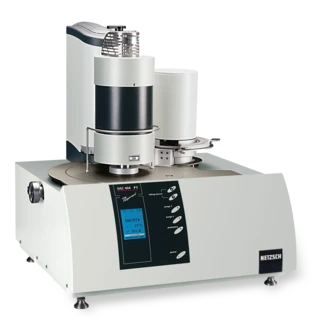
The High-Temperature Differential Scanning Calorimeter
- Temperature range: from -150°C up to 2000°C
- Integrated metal-housed mass flow control systems (MFC) for three different gases
- Optional temperature modulation (TM-DSC)
- STA 449 F3 Jupiter®

The simultaneous thermal analyzer with maximum flexibility
- Temperature range: from -150°C up to 2400°C
- Choose between twelve types of easily interchangeable furnaces
- Various types of different sensors, sample carriers and crucibles
- LFA 457 MicroFlash®
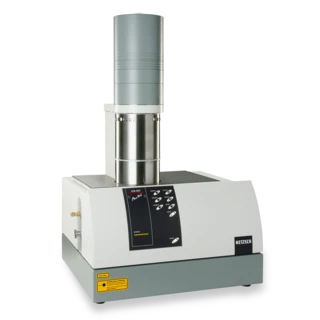
Determination of the thermophysical properties
- Temperature range: from -125°C to 1100°C
- Two different user-exchangeable furnaces
- Measuring Thermal DiffusivityThermal diffusivity (a with the unit mm2/s) is a material-specific property for characterizing unsteady heat conduction. This value describes how quickly a material reacts to a change in temperature.thermal diffusivity and Thermal ConductivityThermal conductivity (λ with the unit W/(m•K)) describes the transport of energy – in the form of heat – through a body of mass as the result of a temperature gradient (see fig. 1). According to the second law of thermodynamics, heat always flows in the direction of the lower temperature.thermal conductivity
